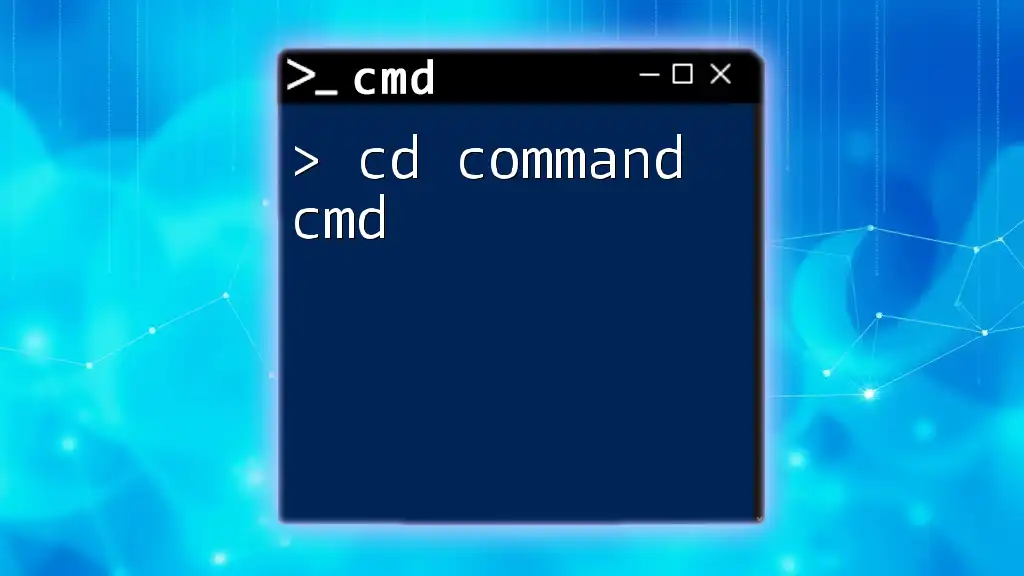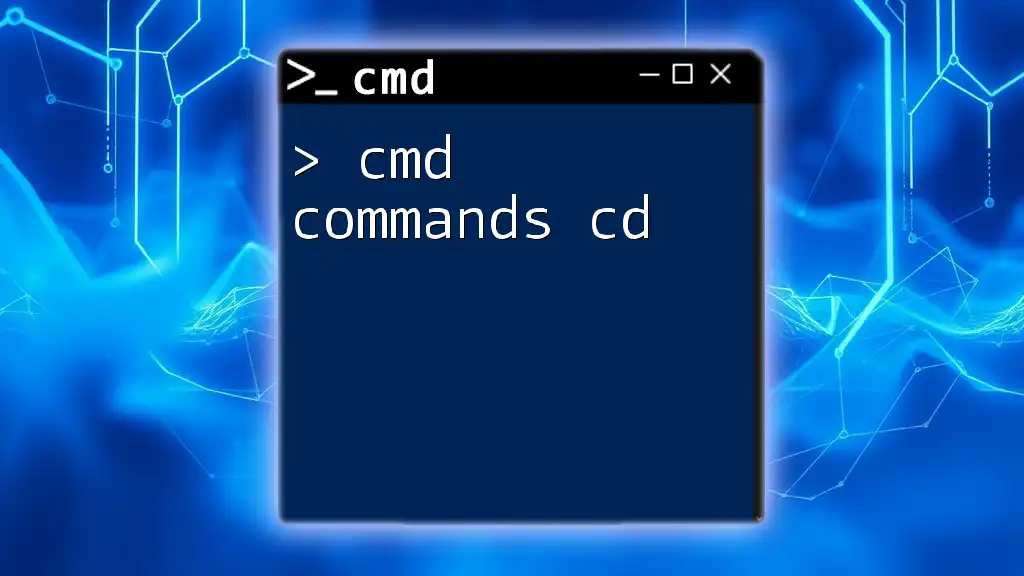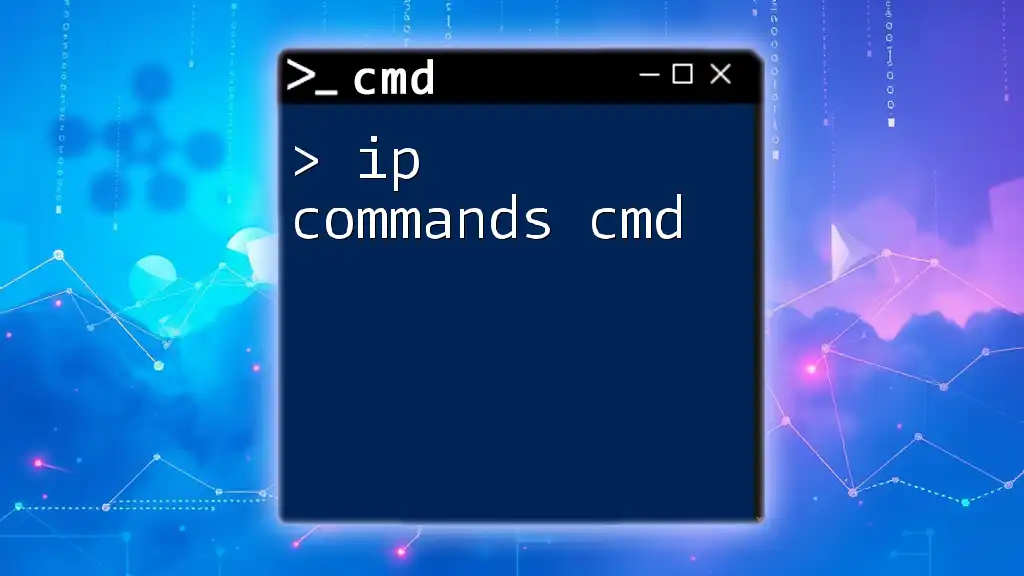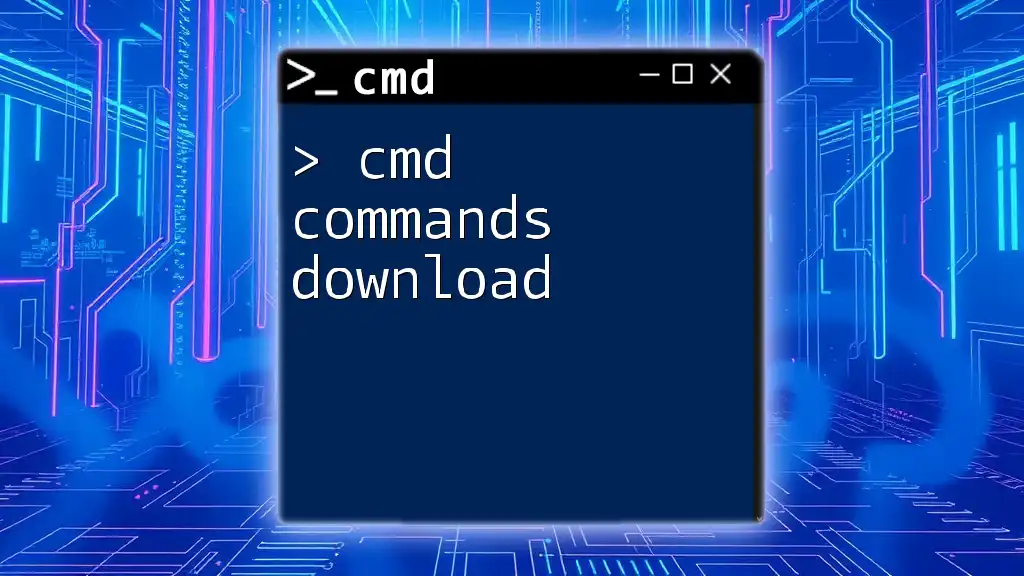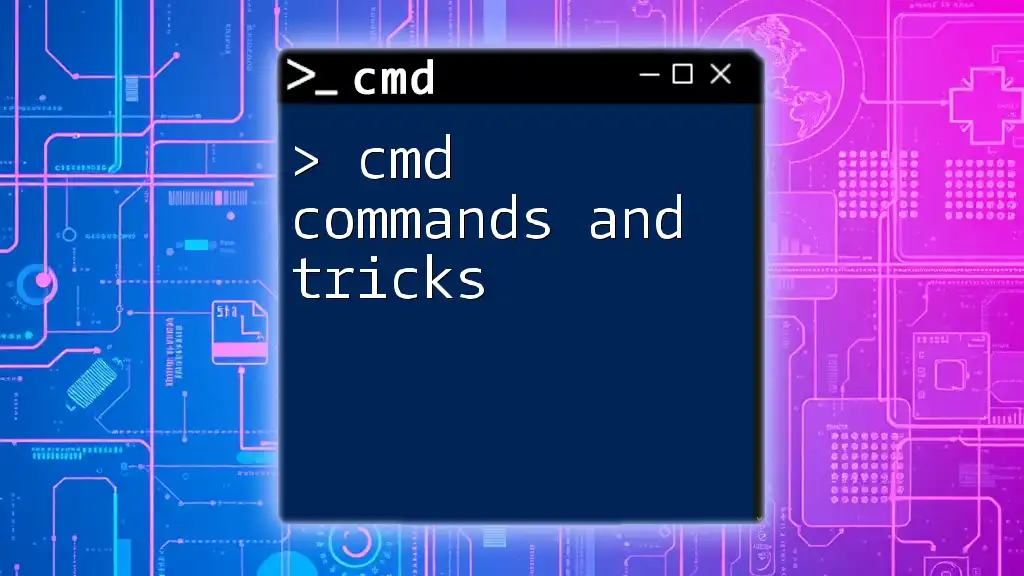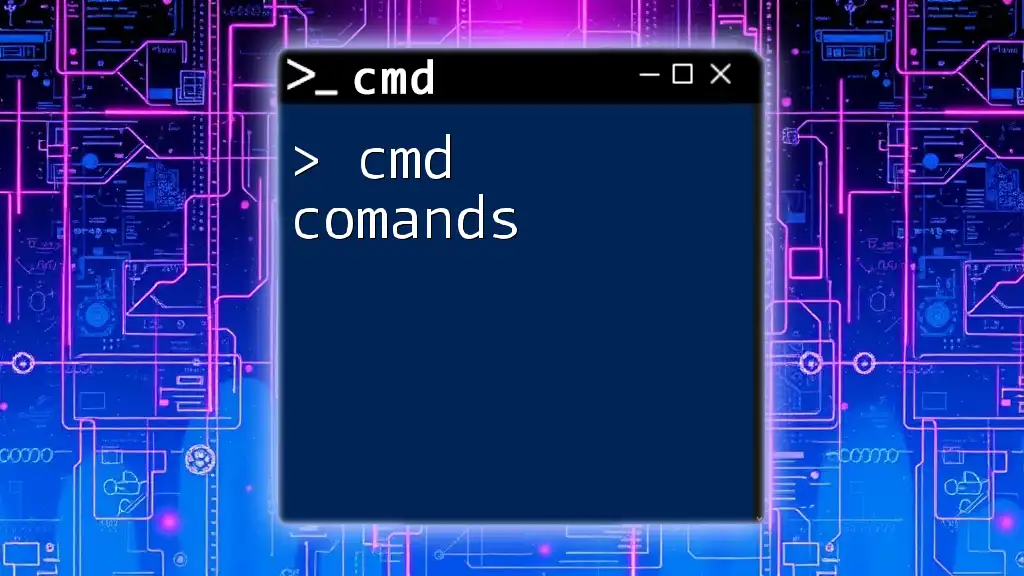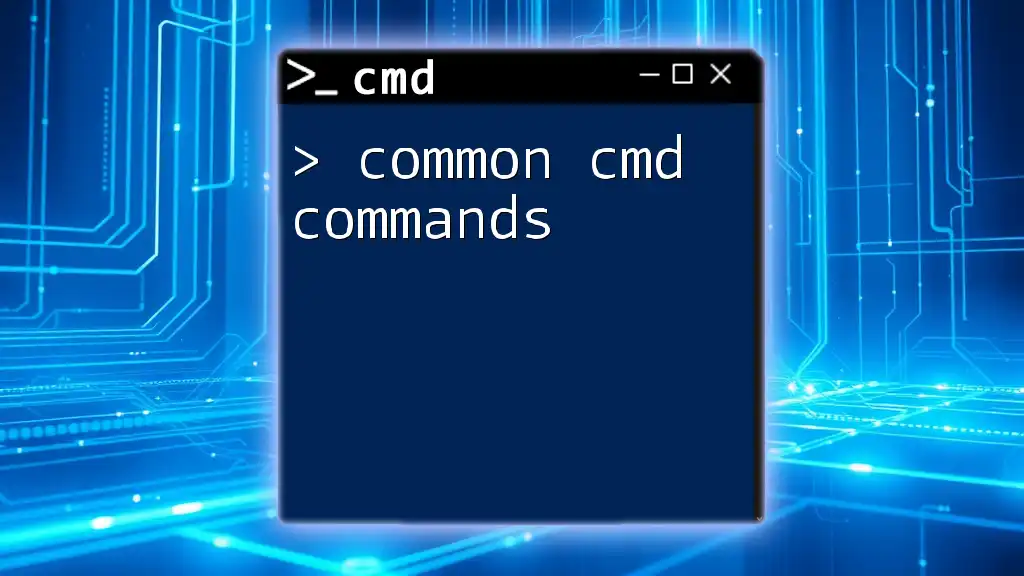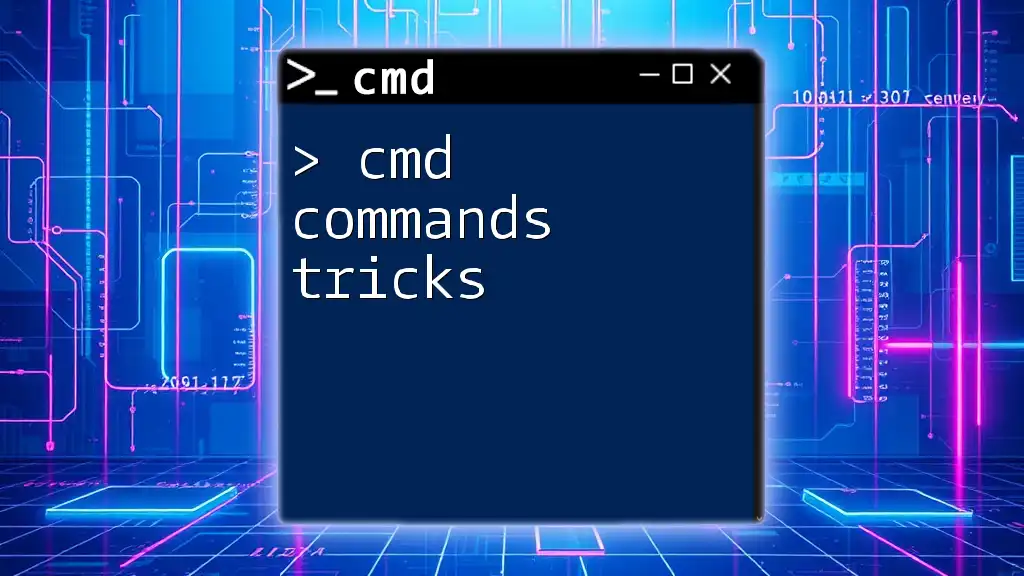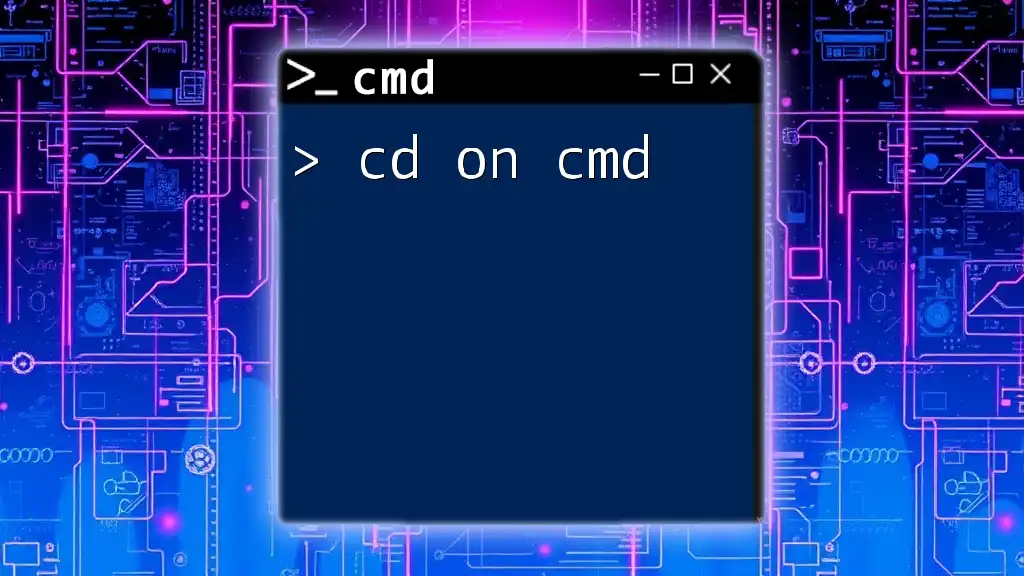The `cd` command in CMD is used to change the current directory to a specified folder on your system.
cd C:\path\to\your\folder
Understanding the Basics of the cd Command
What is the cd Command?
The `cd` command, short for change directory, is a fundamental command in the Command Prompt (cmd) used for navigating between folders and directories in your file system. Mastering this command is essential for effectively managing files and directories directly from the command line, particularly for users who often work without a graphical user interface.
Why Use the cd Command?
Using the command line offers several advantages over traditional graphical interfaces:
- Speed: Navigating through directories using commands can often be faster than clicking through folders.
- Scripting: The `cd` command can be incorporated into scripts, making it powerful for automating tasks.
- Remote Access: For advanced users, when accessing remote systems via SSH, the command line can be the only option available.
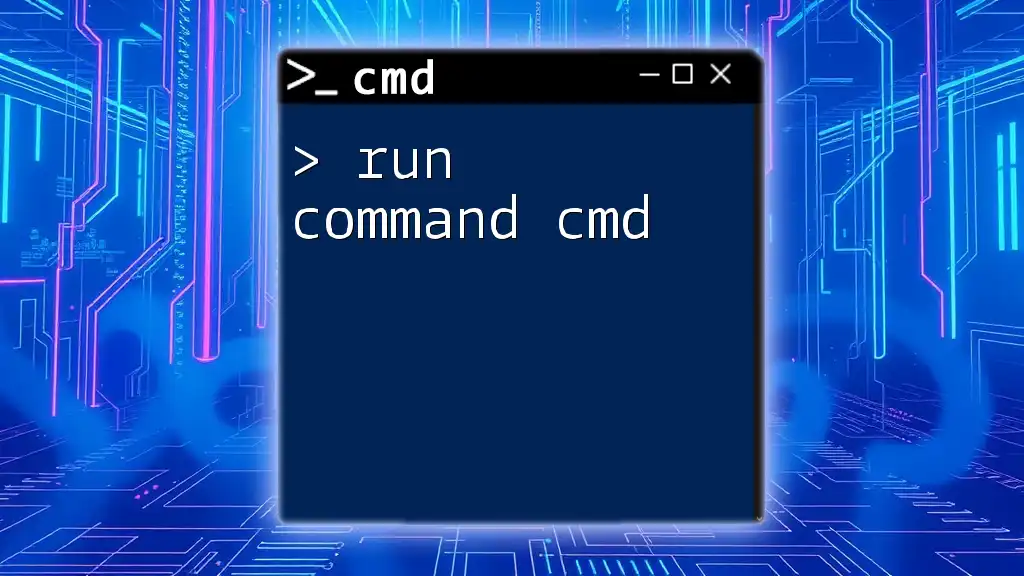
How to Use the cd Command
Syntax of the cd Command
The basic syntax for the `cd` command is as follows:
cd [path]
Here, `[path]` refers to the directory you want to navigate to. This can be either an absolute path (starting from the root of a drive) or a relative path (relative to the current directory).
Navigating Directories
Moving to a Specific Directory
To move to a specific directory, use the absolute path:
cd C:\Users\YourUsername\Documents
In this command, C: designates the drive, while `Users\YourUsername\Documents` specifies the path to the target directory.
It’s important to understand the difference between absolute paths and relative paths. An absolute path provides the complete address for the directory, while a relative path starts from the current directory.
Moving Up a Directory
If you need to navigate one level up in the directory hierarchy, you can use:
cd ..
The `..` symbol represents the parent directory. For instance, if you are currently in `C:\Users\YourUsername\Documents\Work`, executing `cd ..` would take you back to `C:\Users\YourUsername\Documents`. You can chain ".." to move up multiple levels, e.g., `cd ..\..` to move up two levels.
Moving to the Root Directory
To quickly access the root directory of the current drive, simply type:
cd \
This command can be especially useful when you want to start fresh from the root level.
Using Tab Autocomplete
A time-saving feature of the `cd` command is the Tab autocompletion. As you start typing the name of a directory, pressing the Tab key will automatically complete the name if it’s unique or cycle through available options.
For example, if you're in `C:\Users` and type:
cd Yo[TAB]
Pressing Tab might autocomplete to `YourUsername`, allowing for faster navigation without needing to type everything.
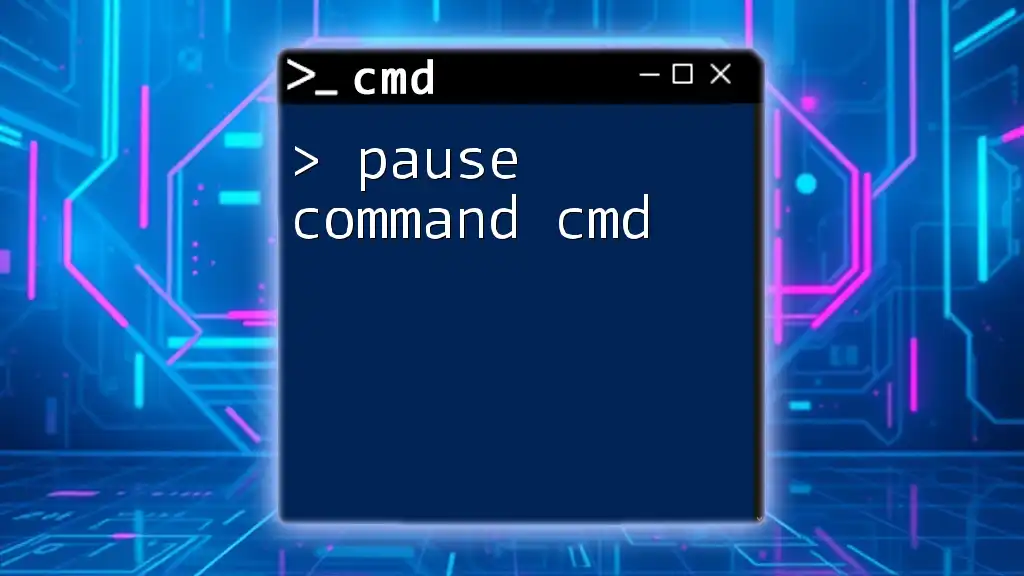
Advanced cd Command Usage
Changing Drives
Switching between different drives is straightforward. Just type the drive letter followed by a colon:
D:
For example, if you're currently in `C:\Users\YourUsername` and want to switch to the D drive, this command allows you to do so easily. After changing drives, you may need to use the `cd` command again to navigate to a specific directory on the new drive.
Using Quotation Marks for Spaces in Paths
When dealing with directories that contain spaces, you must enclose the entire path in quotation marks. For instance:
cd "C:\Program Files"
This is crucial, as omitting the quotes could result in an error or incomplete navigation. Ensure any path with spaces is properly encapsulated.
Navigating with Environment Variables
Environment variables enhance navigation flexibility. For instance, using `%USERPROFILE%` allows you to reference your user directory without typing the full path:
cd %USERPROFILE%\Documents
This represents a dynamic approach to directory navigation and can adapt to any user profile without modification.
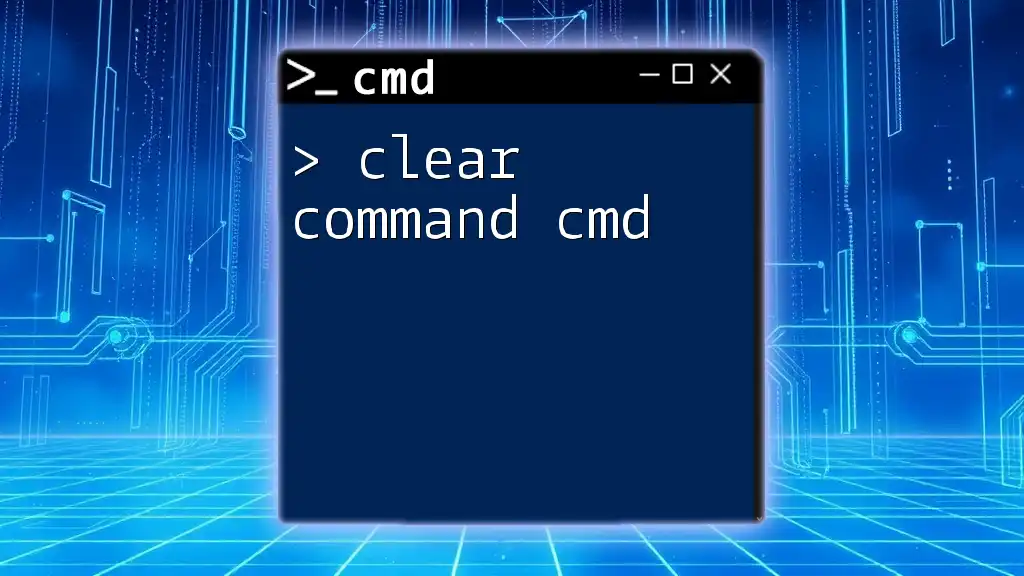
Common Errors and Troubleshooting
Common Error Messages
While using the `cd` command, you might encounter various error messages. Here are a couple of frequent issues:
- "The system cannot find the path specified.": This error often indicates that the directory you are attempting to access does not exist. Double-check for typos in the path.
- "Access is denied.": This message signifies a permission issue, where you may not have the rights to access the specified directory.
Best Practices
To avoid common pitfalls while using the `cd` command, consider these best practices:
- Organize your directories: Keep a logical structure to your file system, making navigation simpler.
- Utilize command history: The `doskey` command allows you to view and reuse previously typed commands, saving time when navigating through directories.
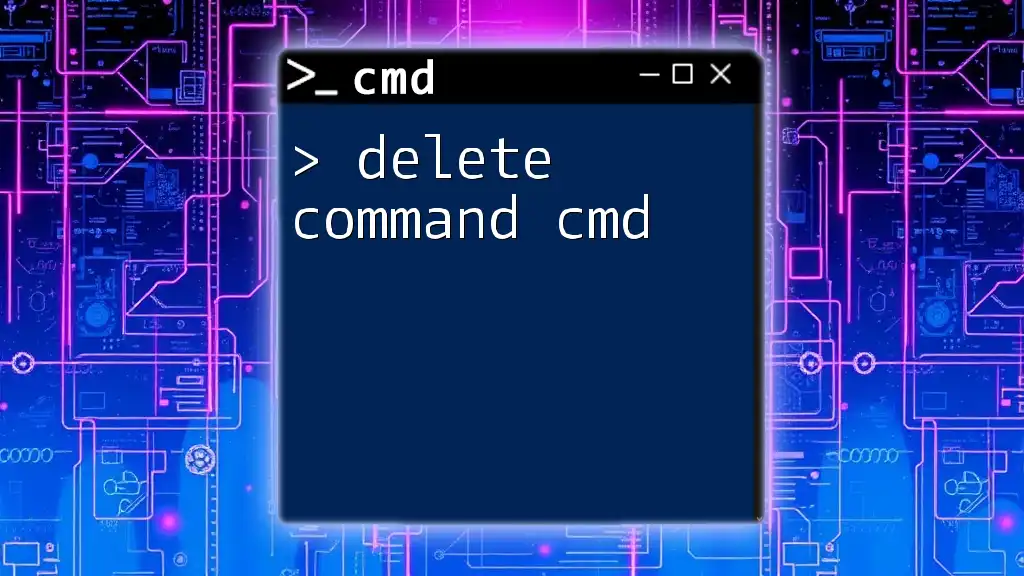
Conclusion
Mastering the `cd command cmd` is a fundamental skill for anyone who wishes to navigate their file system efficiently using the command line. By practicing the different functionalities outlined in this article, users can enhance their productivity and command-line fluency, empowering them to manage files and directories with confidence.
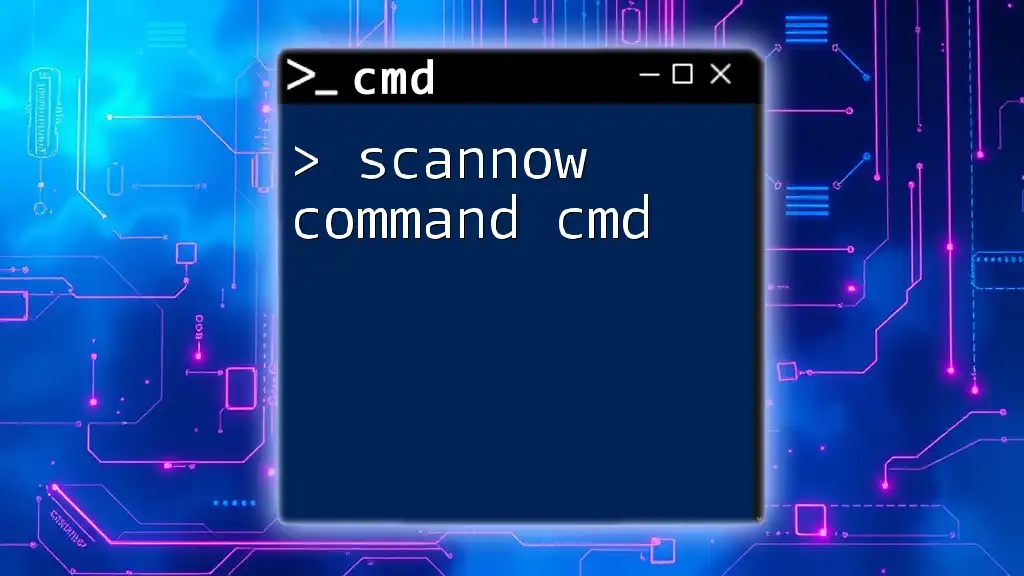
Call to Action
Ready to explore more cmd commands and increase your command-line expertise? Join our community of learners and share your experiences with us! Your journey to mastering the command line starts now!

